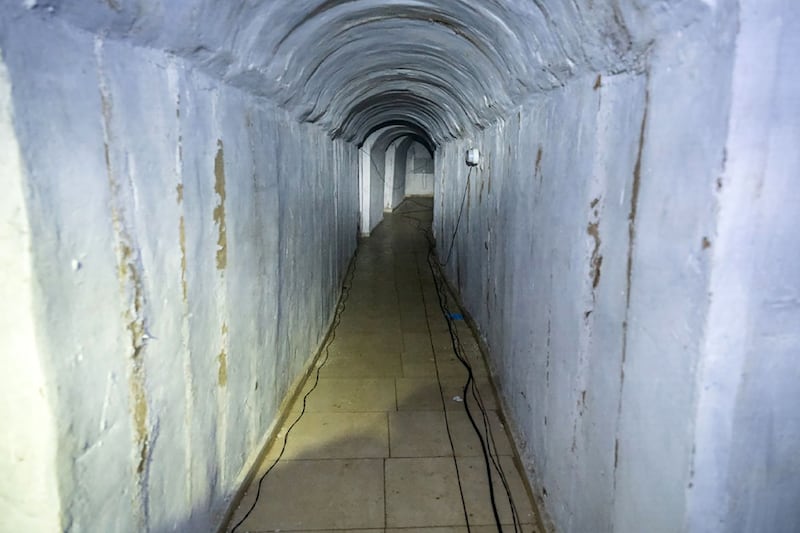Live updates: Follow the latest news on Israel-Gaza
Israel resumed pumping thousands of cubic metres of Mediterranean seawater into Hamas tunnels in Gaza on Wednesday, sparking concerns that hostages who may be held underground could be at risk.
According to Hamas, 500km of warren-like structures – known as the “Gaza metro” – have been built. Other estimates put the length of the complex at about 250km.
Israeli forces continue to discover more tunnels in continuing operations.
“It is part of a range of tools deployed by the [military] to neutralise the threat of Hamas's subterranean network of tunnels,” an Israeli army spokesman said.
It is not the first time the tunnels have been partly flooded, after an Israeli trial run of the tactic last year. Egypt used the tactic in 2015 to destroy tunnels used for smuggling on its border.
More than 50 years ago, the Vietnam war included a gruesome struggle by the US and allies against tunnel complexes spanning hundreds of kilometres used by Vietcong fighters.
Like Israel has in Gaza, US forces in Vietnam used bombs with delayed fuses that burrowed into earth, creating shock waves to crush the structures. But the tunnels continued to frustrate US offensives.
Efforts involved pumping tunnels with explosive gas and tear gas, flooding them, defoliating areas above ground with carcinogenic herbicides and clearing stretches of jungle.
Specialist volunteers, the Tunnel Rats, were sent alone underground for deadly missions armed with a torch and a pistol.
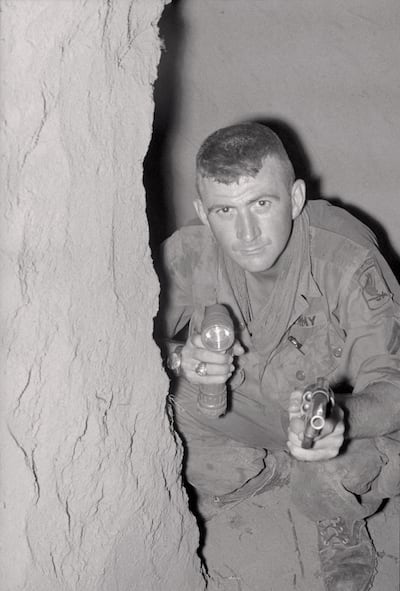
Today, Israel has Yahalom, a part of its Combat Engineering Corps, the equivalent of the US Army Corps of Engineers who fought in the tunnels in Vietnam. Within Yahalom, Israel has the Samur, or “weasel” soldiers – their own Tunnel Rats.
The US effort in Vietnam took two years, suggesting Israel will not achieve its war aims soon against Hamas tunnels that could be sturdier and deeper underground.
Tunnel warfare, fought in darkness in cramped spaces where even night-vision devices do not work, and the threat of booby traps, minimises advantages for attackers.
Israel has some options unavailable to the US in Vietnam, including armed drones such as the Lanius, which co-ordinates with a ground robot.
But it is not clear whether such systems can cover kilometres of tunnels.
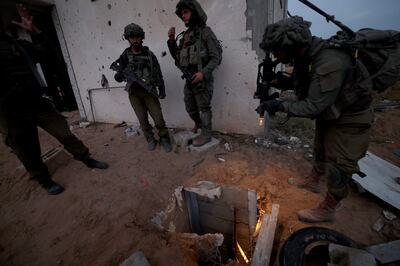
“The largest VC tunnel system by far was in Ben Cat and Phu Hoa districts north of Saigon – no other part of South Vietnam had a tunnel system even remotely as complex. The tunnels of Cu Chi were actually in Phu Hoa district, Binh Duong province,” said Erik Villard, a US army historian of the conflict, referring to tunnels that are now a popular tourist attraction.
“The tunnel system in the Iron Triangle [an infamous Vietcong base area] was … around 15km north to south and about 7km wide. There was another tunnel system in neighbouring Phu Hoa district that was rectangular, about 15km long and 8km wide.”
The US launched two huge military operations to clear these complexes, Operation Crimp and Operation Cedar Falls, the latter being the largest in the war, with 30,000 US and allied troops.
US and Australian soldiers encountered problems faced by Israelis now, finding themselves camped directly above tunnel systems and subject to pop-up attacks where they could take casualties but only had seconds to respond before the enemy disappeared underground.
The tunnels, despite often being crudely built, proved extremely hard to destroy. In Vietnam, the complexes contained provisions and amenities that could sustain forces for months, including medical care, thought to be the case in Gaza today.
“Most of the tunnels were packed earth with some wood reinforcements, occasionally multilevel, but mostly a warren of single level tunnels relatively close to the surface,” Mr Villard said.
“They were largely used to hide local Vietcong guerrillas and Vietcong and North Vietnamese Army command cadres that controlled the area north of Saigon and provide storage for supplies.”
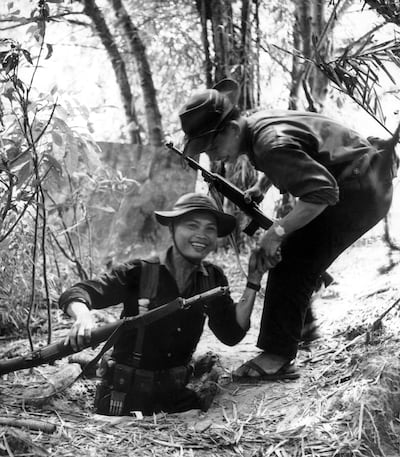
By contrast, Hamas’s tunnels are built with prefabricated concrete.
In Vietnam, US forces eventually removed civilians around one of the largest tunnel complexes, before heavily bombing the area.
Gaza however, is heavily built up and Israeli air strikes have already killed many thousands of civilians.
“The US experimented with other ways of defeating the tunnels, none of which proved to be very effective,” said Mr Villard.
“They tried to use a bedbug system that would sniff out humans and then alert the device operator, but the bugs couldn’t differentiate between friend and enemy.
“The Mighty Mite system tried to use smoke blowers to flood the tunnels with smoke, but water traps and internal doors prevented the smoke from going very far.
“Tunnel rats were the most effective way of determining the extent of the tunnels and retrieving intel. Combat engineers would then seal the tunnel with explosives, but the best method of destroying them were Arc Light strikes.”
B-52s in Vietnam were able to drop colossal bomb loads on enemy targets, carrying 31 tonnes of bombs each. They often attacked in groups of three, in what was known as Arc Light missions.
In one operation against the Iron Triangle tunnels, 125 B-52 strikes were launched.
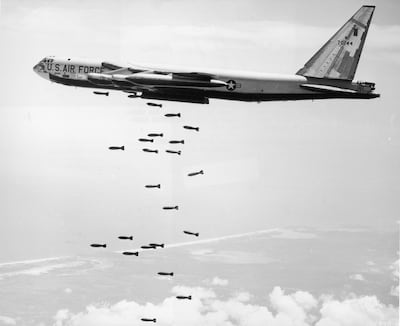
“The tunnels in Ben Cat lost much of their importance after Cedar Falls as Rome Plough operations, Arc Light strikes and population relocation turned the area into a wasteland,” said Mr Villard, referring to razor-sharp ploughs on bulldozers used for cutting down jungle.
“The allies never entirely destroyed the tunnel system in Ben Cat and Phu Hoa Districts, but by mid-1968 the US had largely neutralised the value of the tunnels to the enemy by deforesting the area, bombing it with B-52 strikes, locating and blowing up many key tunnels using enemy defectors to point them out, or sometimes finding them with careful searches.”
“It took about two years to neutralise the main threat from the tunnels.”
Hamas holdouts
It remains to be seen whether Israel will spend a similar amount of time in Gaza.
Asked if Hamas could hold out in the tunnels for months, David Hartwell, a security and political-risk analyst focused on the Middle East, said: “It's a tough question because only the Israelis have enough intelligence on their extent and complexity.
“Given how long Hamas has been preparing for this though, nothing would surprise me. It probably also comes down to what we mean by 'neutralise' [the tunnels],” he said, when discussing crushing tunnels or merely sealing them off.
“Take out of action or destroy – there is obviously a difference. I doubt they can destroy them all in the remaining time they’ve got, so it’s more likely to be a case of putting them beyond use and then leaving their long-term destruction to any follow-on non-Hamas administration.
“Lots of ifs and buts though, as the Israelis don’t trust anyone other than themselves to do the job properly. They have to hope they can complete it before [US President Joe] Biden starts turning the screw on de-escalation.”
